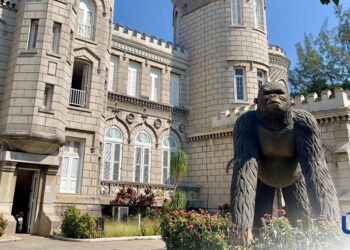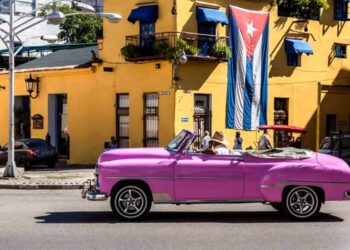Cuba is one of the most fascinating places to visit for history aficionados, with its fair share of neoclassical and colonial architecture, authentic Spanish fortifications, and beautifully preserved castles and fortresses. One of the most notable places of interest being the Fortaleza de San Carlos de la Cabaña – or as we know it best, the La Cabaña Fortress.
Constructed between 1763 and 1774, this mighty 18th century complex is situated in the enchanting capital of Havana and is crowned as the third largest in the Americas, dominating an elevated hilltop on the eastern side of the harbour entrance.
The Fortress was initially built for extra protection purposes following the brief yet successful capture of Havana by British Forces in 1762; and despite the British giving the city back to the Spanish under new treaty terms, King Carlos III knew the capital had shown weakness and set to implement new measures sure to prevent any future attacks. Luckily for Havana, La Cabaña was so well designed that invasion was practically impossible and because of this has, in fact, had a fairly nonchalant history.
We know that the exterior is visibly striking, but what lies within La Cabañas crumbling walls is just as fascinating. Playing an equally important role in Cuba’s history was the Fortresses small self-contained village, which featured lodgings for the soldiers and officers, an execution site, and a chapel, alongside a collection of canons – all of which can still be explored (to a certain extent) with visitor entry tickets.
Today, La Cabaña is one of the most popular attractions for visitors to the Cuban capital. Enter through the grand gates and its cobbles are now fringed by cafes, tobacco shops and a couple of small museums to browse – the Museum of Fortifications and Weapons, and the Museo de Comandancia del Che. So, history buffs will find spending half a day (or more) wandering the grounds easy. While you’re here, be sure to listen out for the centuries-old tradition known as “El Cañonazo” whereby a canon is fired at 9pm every night by uniformed soldiers – this action once notified the public that the city gates had been closed. But don’t worry if you’ve already left the grounds by this point, as you’ll be sure to still hear it!
If your itinerary is peppered with iconic landmarks to tick off, just a little further along the bay you’ll find the even older neighbouring El Morro Fortress, built between 1589 and 1630. For a century the fortification survived all European attacks that threatened it – including English, French and Dutch – until of course its capture in 1762.

Love Cuba is the UK’s leading Cuba holiday specialist. Click here for more info or call us on 0207 071 3636 or email enquiries@lovecuba.com






























